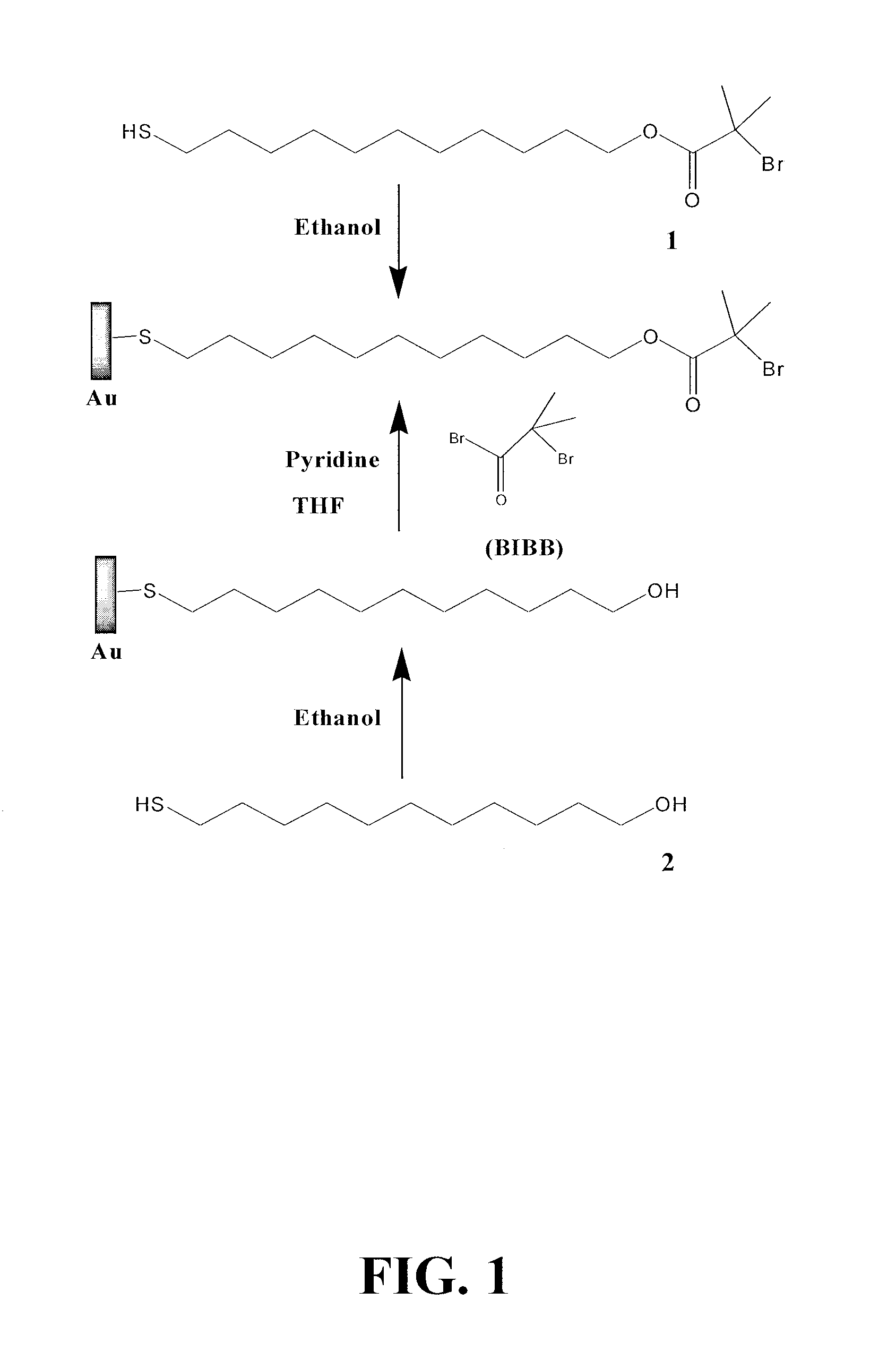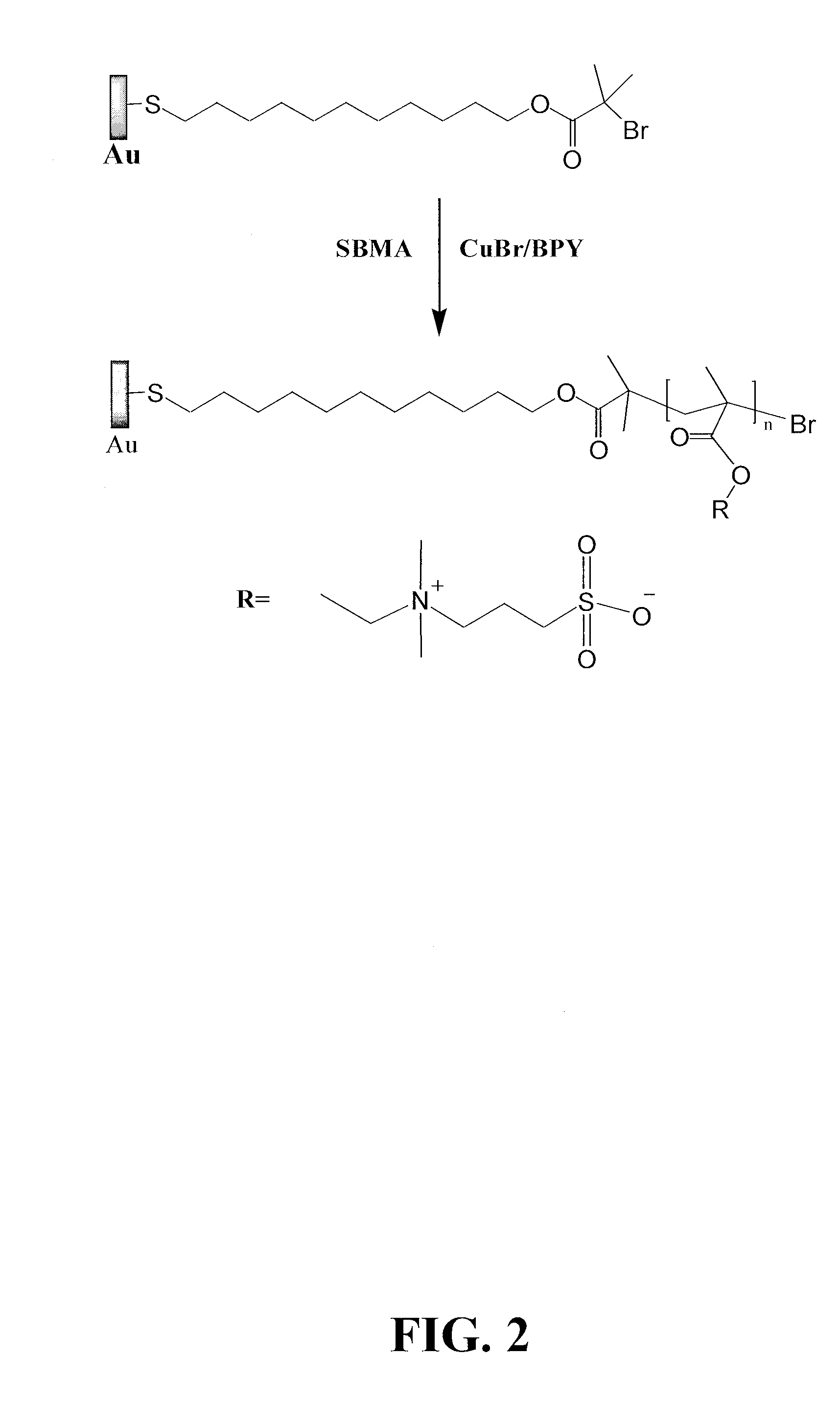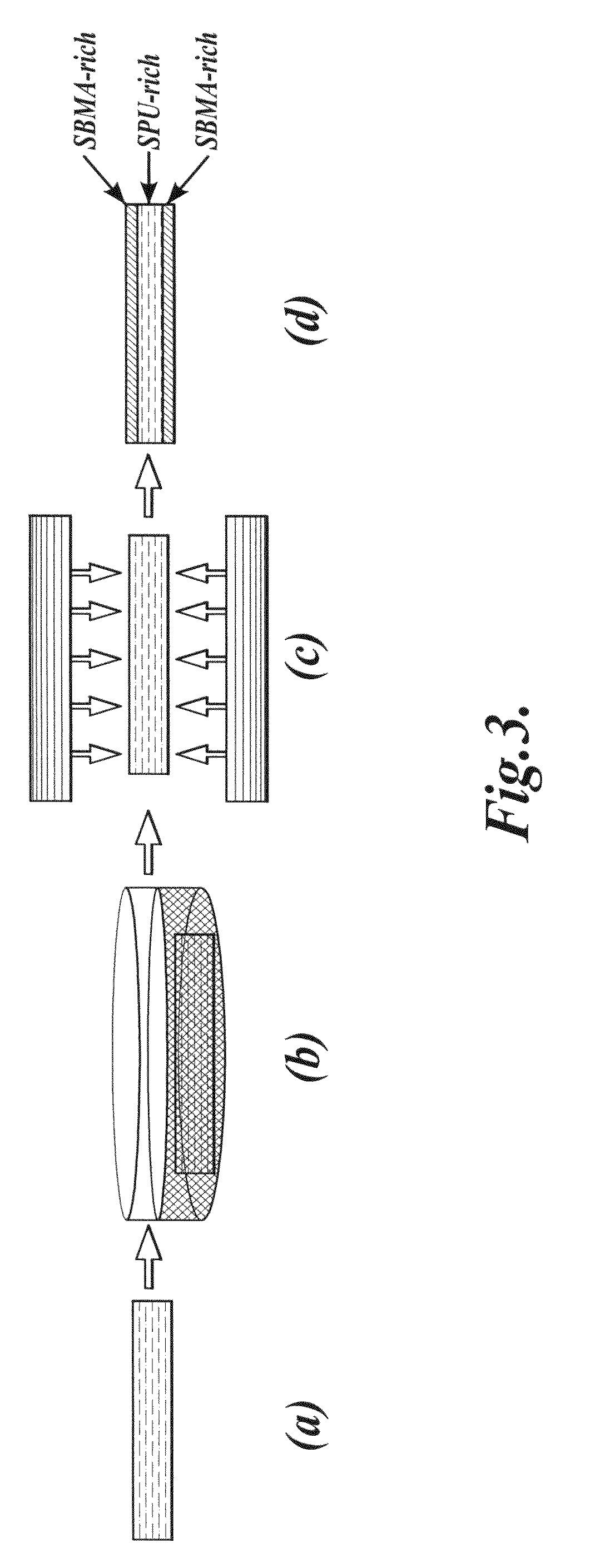Super-low fouling sulfobetaine and carboxybetaine materials and related methods
- Summary
- Abstract
- Description
- Claims
- Application Information
AI Technical Summary
Benefits of technology
Problems solved by technology
Method used
Image
Examples
example 1
Representative Initiator SAM and Hydroxy-Terminated SAM: SAM Preparation and Initiator Immobilization
[0149]SPR glass chips or silicon wafers were coated with an adhesion-promoting chromium layer (thickness 2 nm) and a surface plasmon active gold layer (48 nm) by electron beam evaporation under vacuum. Before SAM preparation, the substrates were washed with pure ethanol, cleaned under UV light, and washed with water and pure ethanol. SAMs were formed by soaking gold-coated substrates in pure ethanol solution of thiols at room temperature after careful cleaning. In this example, two SAMs were formed on the substrates: initiator ω-mercaptoundecyl bromoisobutyrate (1) SAM (initiator SAM or Br-SAM) and 11-mercapto-1-undecanol (2) SAM (OH-SAM) (See FIG. 1).
[0150]To prepare an initiator SAM on a gold surface and compare their effects on polymerization and protein adsorption, 1 solution with various concentrations and cleaning procedures were tested. If not specified, 1 mM 1 solution in pur...
example 2
[0152]The Grafting of Representative Sulfobetaine Polymers onto an Initiator-Coated Surface SBMA polymerization. CuBr and the substrate with immobilized initiators were placed in a reaction tube in a dry box under nitrogen protection. The tube sealed with rubber septum stoppers was taken out. Degassed solution (pure water and methanol in a 1:1 volume ratio) with SBMA and BPY were then transferred to the tube using syringe under nitrogen protection. After the reaction, the substrate was removed and rinsed with ethanol and water, and the samples were kept in water overnight. Usually rinsing with PBS buffer is also applied to remove unbound polymers before testing (FIG. 2).
[0153]SPR and protein adsorption. Protein adsorption was measured with a custom-built surface plasmon resonance (SPR) sensor, which is based on wavelength interrogation. A SPR chip was attached to the base of the prism, and optical contact was established using refractive index matching fluid (Cargille). A dual-chann...
example 3
[0158]Representative Well-Defined Diblock Copolymers Containing Sulfobetaines Preparation of SBMA Block Copolymerization in Aqueous Solution. The controlled polymerization is achieved via the ATRP method (FIG. 1). The copolymerization of a diblock copolymer is a reversible redox process, through which a transition metal compound acts as a carrier of a halogen atom to sequentially link monomer to a monofunctional macro-initiator. PPO with a macro-initiator (PPO—Br) was synthesized by reacting monohydroxy-based poly(propylene glycol) with 2-bromoisobutyrylbromide in tetrahydrofuran. The product was purified by extraction with brine three times. For the polymerization of SBMA with 11200 molecular weight, SBMA (2.0 g, 6.77 mmol) was polymerized in 10 ml methanol using [SBMA]:[PPO—Br]:[CuBr]:[bpy]=50:1:1:2 under nitrogen at 20° C. After 24 hours, the resulting reaction solution was passed through an aluminum oxide column, precipitated into ethanol, and re-dissolved into water repeatedly ...
PUM
| Property | Measurement | Unit |
|---|---|---|
| Area | aaaaa | aaaaa |
| Fouling properties | aaaaa | aaaaa |
| Adsorption entropy | aaaaa | aaaaa |
Abstract
Description
Claims
Application Information
 Login to View More
Login to View More - R&D
- Intellectual Property
- Life Sciences
- Materials
- Tech Scout
- Unparalleled Data Quality
- Higher Quality Content
- 60% Fewer Hallucinations
Browse by: Latest US Patents, China's latest patents, Technical Efficacy Thesaurus, Application Domain, Technology Topic, Popular Technical Reports.
© 2025 PatSnap. All rights reserved.Legal|Privacy policy|Modern Slavery Act Transparency Statement|Sitemap|About US| Contact US: help@patsnap.com



